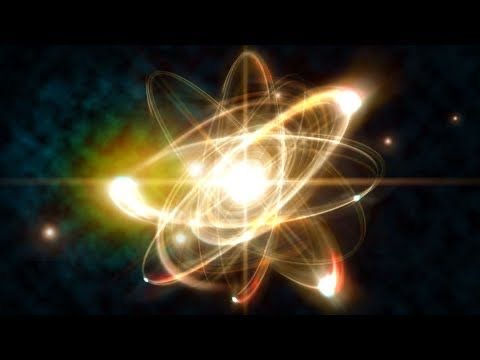Tetraneutron Found
- Arthur

- Sep 11, 2022
- 3 min read
A four-neutron particle called a tetraneutron, which forms very briefly as a “resonance”, has been observed in Japan by researchers who collided highly neutron-rich nuclei with protons. The detection was made at a statistical significance greater than 5σ, putting it over the threshold for a discovery in particle physics. This answers conclusively the long-standing question of whether or not uncharged nuclear matter can exist, and it will motivate searches for more exotic – and potentially longer-lived – neutral particles.

Free neutrons decay to protons, electrons and antineutrinos via the weak interaction in around 15 min. However, neutrons in bound systems will not decay under certain conditions. In atomic nuclei, for example, neutrons are kept stable by the strong nuclear force. Neutron stars are also stable thanks to effects of intense gravity on their constituent neutrons. As a result, physicists have wondered for decades whether nucleus-like particles made solely of neutrons could exist, even if fleetingly.
The simplest such particle would be the dineutron – comprising two neutrons – but calculations suggest that this would not be bound. However, there is only a slight potential energy gain associated with dineutron formation. This has encouraged physicists to look for more complex particles such as the trineutron and the tetraneutron, especially since technology to bombard targets with radioactive ion beams was developed at the end of the 20th century. In 2002, researchers in France and elsewhere reported an apparent signature of a tetraneutron in collisions of beryllium-14. Multiple subsequent theoretical analyses, however, suggested that to accommodate a bound tetraneutron researchers would have to modify the laws of physics in ways that would make them inconsistent with well-established experimental results.
Broken springs
The calculations did, however, leave open the possibility that a metastable “resonant” tetraneutron state could exist. Such states occur when a particle has a higher energy than its separated constituents, but the attractive strong nuclear force momentarily hinders the components from separating. James Vary of Iowa State University in the US offers an analogy: “Let’s suppose I have these four neutrons, and each is attached to each of the others by a spring,” he explains; “For four particles you need a total of six springs. Quantum mechanically they’re oscillating all over the place, and the energy stored in the system is actually positive. If the springs break – which can happen spontaneously – they fly apart – releasing the energy stored in those oscillations.”
In 2016, researchers at the RIKEN Nishina Centre in Japan and elsewhere reported tentative evidence for a tetraneutron-like resonant state when colliding a beam of helium-8 – the most neutron-rich bound isotope known – with a helium-4 target. Occasionally, the helium-4 exchanged two pions with the helium-8 to produce beryllium-8 and convert helium-4 into a tetraneutron. The beryllium-8 nucleus then decayed to two more helium-4 nuclei which were detected and used to reconstruct the energy of the tetraneutron. These results were consistent with the inferred properties of the tetraneutron, however, the volume and precision of the data was low. Stefanos Paschalis of the UK’s University of York explains, “Based on that signal, which was four counts, a large proportion of the community remained sceptical regarding the existence of the tetraneutron resonant state”.
More direct approach
In the new research, Paschalis and colleagues took a more direct approach, using the RIKEN Nishina Centre’s Radioactive Ion Beam Factory to shoot helium-8 into liquid hydrogen, thereby scattering the atoms off protons. “Helium-8 has a very well-defined alpha-particle (helium-4) core, and then four other neutrons flying around,” explains Paschalis. “With our proton, we remove suddenly this alpha particle, and then leave the four neutrons in the same configuration.”
The researchers recorded the momenta of the incoming helium-8, the scattered protons and helium-4 nuclei in 422 coincident detections and plotted the missing energy. They observed a well-defined peak just above zero, indicating a particle unbound by about 2 MeV. “There is no doubt that this signal is statistically significant, and we should understand it,” says Paschalis.
Vary, who was not involved in the research, describes the work as “very significant” for three reasons; “This [observation] has very good statistics, and in my mind it’s completely valid to claim a discovery. The second is that they measure the energy with good precision, and the third is that they measure the width of the resonance – which gives you the lifetime. Those are quantities that theory can calculate and try to compare with experiment.” He says researchers will now seek out even more exotic states: “What about six neutrons? What about eight neutrons? Can they form resonant states, or possibly even longer-lived bound states that decay via the weak interaction?”
Paschalis says the researchers are planning to explore this, as well as probing the structure of the particle they have already found in more detail.
The research is described in Nature.


















Comments